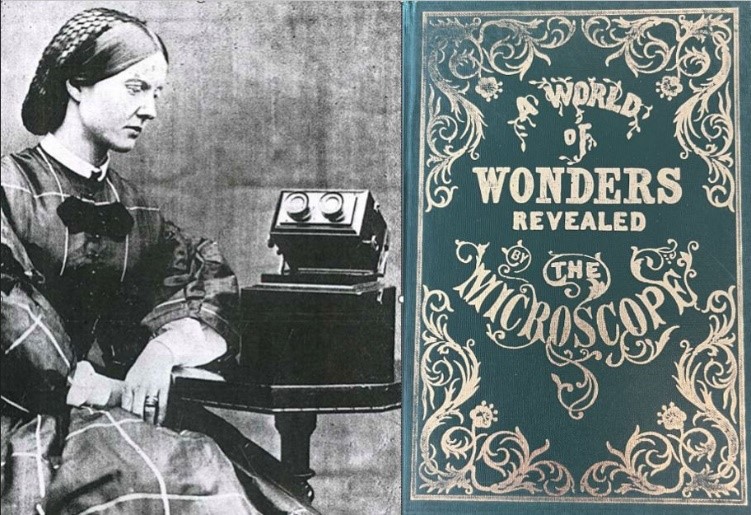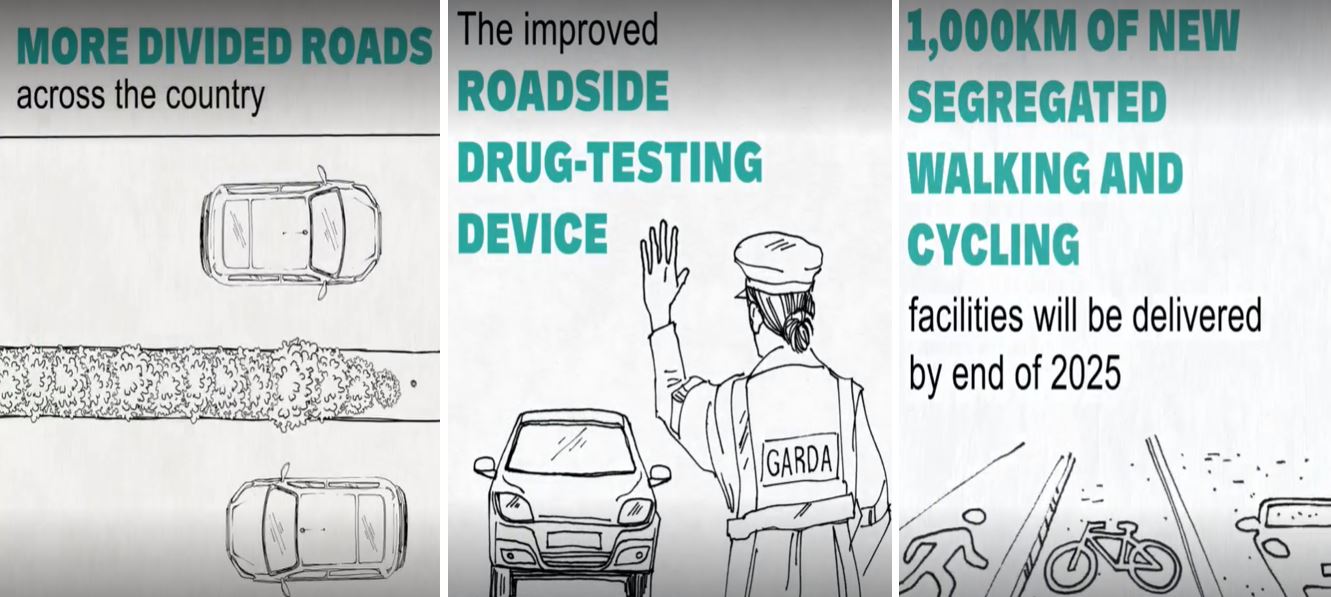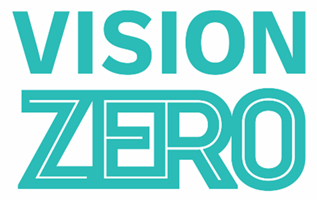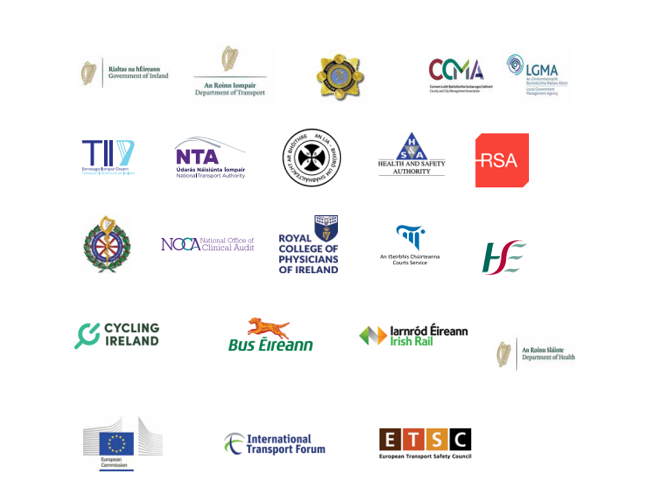Vision Zero
An end to road deaths in Ireland is possible and we are the ones that can make it happen.
The campaign reminds viewers that in 1869, the world’s first road fatality was recorded in Ireland. You can see a ledger, where Mary Ward’s name was etched into history. We see the words ‘road death’ written down as a cause of death for the first time ever.
Now our book flicks past page after page filled with thousands of names of those we have lost on our roads in the years since. The final page of the book contains the names of people who lost their lives on Irish roads. These flicking pages create an animation that shows the people who can bring an end to this tragedy- the very people who are sharing the roads today, young, and old, motorist, person who cycles, pedestrian… all of us can play a part.
What Lifesaving changes can I make as a road user to help Ireland achieve Vision Zero?
- BE SAFE, BE SEEN: Please ensure that your vehicle has all required lighting, and all lights are working.
Slow Down: Drive at a speed that is appropriate for both the condition of the road you’re driving on and the weather conditions on your journey, while also remaining within the speed limits.
Never ever drink or drug drive: Never drive your vehicle while under the influence of alcohol or drugs.
Seatbelts: Always wear your seat belt while driving
Stop, Sip, Sleep: If you’re feeling tired while driving, stop, have a caffeinated beverage, and take a 15 – minute nap.
Never use your mobile phone while driving
If there is a weather warning in effect, listen to local reports from An Garda Síochána or the council. Follow the severe weather advice on the RSA website. In severe weather, consider postponing your journey if possible.
Make sure your vehicle’s NCT is up to date, and make sure to keep your vehicle maintained and in roadworthy condition.
Have your vehicle serviced by a qualified mechanic as per your vehicle’s manufacturer's guidelines.
Before setting off on a journey, perform a walk around inspection of your vehicle to make sure it’s roadworthy.
Check your tyres: Make sure that your tyres are above the legal tread depth of 1.6mm, there are no cracks, cuts or bulges and your tyres are inflated to the correct air pressure for your vehicle. Remember your tyres are the only contact your vehicle has with the road surface.
- Look out for vulnerable road users: people who cycle, pedestrians and people on horseback. If overtaking, allow sufficient space.
- When overtaking cyclists, allow 1m of space in zones 50 km/h and under, and 1.5m in zones over 50 km/h.
- You can see a full list for both car drivers and motorcyclists on our website.
BE SAFE BE SEEN: If you are walking or running, always make sure you are easily visible to other road users. You could consider wearing Hi-Visibility clothing.
If you are walking / running on the road, make sure you walk against the flow of traffic.
Before walking or running, check the weather in the area you plan to use and prepare accordingly.
When crossing roads, remove your earphones / reduce the volume of your music to hear traffic on the roads.
If there’s snow or ice, be careful on the roads as there may be patches of ice or slippery surfaces along your route. Consider postponing until such a time that the roads would be safer to use. If that is not possible, be sure to take extra care when using roads as driver’s braking distance can be affected in adverse weather. Follow the severe weather advice on the RSA website.
BE SAFE, BE SEEN: Make sure you have your front (white / yellow) and rear (red) lights and that they are working correctly. You could also consider High-Visibility clothing.
Wear a helmet and make sure it’s compliant with safety regulations.
Check the weather ahead of your journey. In situations of adverse weather, consider postponing your journey if possible. Follow the severe weather advice on the RSA website.
Check out the cycle safety information on the RSA website, as well as our cycle safety information booklet.
BE SAFE, BE SEEN: Please ensure that your vehicle has all required lighting, and all lights are working.
Get your commercial vehicle serviced regularly as per the manufacturer’s instructions.
Make sure that your CVRT is in date.
Complete your annual Driver CPC training if you drive a bus or truck for work.
Slow Down: Drive at a speed that is appropriate for both the condition of the road you’re driving on and the weather conditions on your journey, while also remaining within the speed limits.
Never ever drink or drug drive: Never drive your vehicle while under the influence of alcohol or drugs.
Seatbelts: Always wear your seat belt while driving
Stop, Sip, Sleep: If you’re feeling tired while driving, stop, have a caffeinated beverage, and take a 15 – minute nap.
Never use your mobile phone while driving
If there is a weather warning in effect, listen to local reports from An Garda Síochána or the council. Follow the severe weather advice on the RSA website. In severe weather, consider postponing your journey if possible.
Before setting off on a journey, perform a walk around inspection of your vehicle to make sure it’s roadworthy.
Check your tyres: Make sure that your tyres are above the legal tread depth of 1.6mm, there are no cracks, cuts or bulges and your tyres are inflated to the correct air pressure for your vehicle. Remember your tyres are the only contact your vehicle has with the road surface.
Look out for vulnerable road users: people who cycle, pedestrians and people on horseback. If overtaking, allow sufficient space.
When overtaking cyclists, allow 1m of space in zones 50 km/h and under, and 1.5m in zones over 50 km/h.
You can see a full list of ways to stay safe while driving for work here.
Join the Journey
Our journey to vision zero has only started. Our campaign has only started. To help us on the journey to Vision Zero, start your own journey today to end deaths and serious injuries on our road.
Join the journey now by signing up to our Vision Zero pledge below.
Mary Ward was the first person in the world to be killed by a car, and it happened here in Ireland.

Mary’s story
Mary Ward was born in 1827 in County Offaly and was a mother of eight, a pioneering scientist, and a scholar. She achieved widespread recognition in her chosen fields of astronomy and her book ‘A World of Wonders Revealed by the Microscope’ received widespread acclaim. She was the first woman accepted into the Royal Astronomical Society, a fact made even more remarkable when we know how difficult it was for women to succeed academically at the time.
On 31 August 1869 in Birr, Co. Offaly, Mary Ward was thrown from a car while travelling with her cousins. She was killed instantly.
Setting the Nations Homework
Lesson Plan
As part of the campaign, the RSA is asking teachers to include Vision Zero as part of road safety learning in all schools across the country. This lesson plan, which includes the history of Mary Ward, should instill the importance of road safety behaviours for future generations.
Student Lesson Reflection_Mary Ward
Teacher Post Lesson Evaluation_Mary Ward
Our Vision Zero Advertising Awareness Campaign
The new ‘Who was Mary Ward? Vision Zero’ campaign raises awareness of the fact that the first person in the world to die in a road crash happened here in Ireland and thousands more have lost their lives on our roads since then. It’s time we saw an end to road deaths in Ireland.
When we return from black, we’re in a valley of shattered glass. We see Mary’s name etched on a single shard, representing her status as the first person to be killed on our roads. We pick through the debris and find more and more names of real people who died on Irish roads. These shards are reconstructed to form an image of Mary Ward. As we pull out through our microscopic lens to see the Vision Zero logo. “The world’s first road death happened here, it's time we saw our last.”. For Mary Ward, and the many more loved ones we have lost on our roads, we are left with a sense of hope that we can soon see an end to deaths on our roads.
Phase 2
The purpose of the second stage of the campaign is to highlight some of the tangible changes that we will see on the roads in the coming years that will help make Vision Zero a reality. During this campaign we outline some of the measures that will be implemented by the partners of the Government Road Safety Strategy to help make the roads safer for everyone.
It will be the improvements in technology, safer road engineering, increased and more targeted enforcement and changes in public attitudes and behaviour that will enable us as country to achieve vision zero. We are all in this together!
To see the measures that will be implemented on our roads in the years see Action plan for 2021-2030 below.
Radio for this phase can be found below.

What is Vision Zero?
No Road deaths or serious injuries by 2050.
Vision Zero is a worldwide commitment that aims for no road deaths or serious injuries on Irish roads by 2050. The Road Safety Strategy 2021-2030 is the first step in achieving Vision Zero in Ireland. This involves a multi-year strategy across all aspects of road safety, ranging from new and improved infrastructure and an increased role for technology in vehicles and also in the enforcement of road traffic laws to help reduce the dangers faced by road users.

-(7)-video.jpg)
Road Safety Strategy 2021-2024
This will be delivered in three phases. It includes 50 high-impact actions and 136 support actions.
What you can do
There are 184 actions in the Government Road Safety Strategy being delivered across more than 40 Government Departments and agencies to help improve road safety. This is not about shifting the responsibility to road users. We are all in this together. We are calling on all road users to help us and join the journey because we can’t do it without you.
- Think about your road behaviour and see is there is one thing you can change today and for good - your change could save a life.
- A conversation with your family or friends about road safety can make all the difference to kick starting new habits. If you have any concerns about their road behaviour, have that conversation.
- You regularly hear road safety messages around the main killer behaviours. International and Irish research proves that these behaviours are what causes collisions. Let’s make these behaviours unacceptable in Ireland, once and for all.
- So, if you are in charge of a vehicle:
- Never ever drink or drug drive.
- Reduce your speed - the posted speed sign is not a target. Drive at the speed you are comfortable at and at a speed that is safe for the road and weather conditions.
- Avoid distractions and never use a mobile phone when driving.
- If you are feeling tired – STOP SIP SLEEP. Pull over in a safe place, get a caffeinated drink and have a 15-minute nap. However, the only cure for tiredness is sleep.
- Whether you are a passenger or a driver, always wear your seatbelt and always ensure those travelling in the car with you are also wearing theirs and children are correctly restrained according to their height and weight.
- Be Safe. Be Seen
- If you are a motorist, a motorcyclist or cyclist make sure your lights are in good working order.
- If you are driving a vehicle, be careful during dawn and dusk and periods of poor visibility-dipped head lights can help you to be seen by other road users
- If you cycle, enjoy running or walking always wear bright clothing or high visibility material as they will make you more visible to other road users.
- If you are a motorist or a cyclist, always do a safety check on your vehicle or bicycle to make sure they are in a road worthy condition.
- If you have reduced mobility, like to walk or run and are crossing the road, please do so at a pedestrian crossing. Always try to make eye contact with the driver or cyclists before crossing the road and especially at junctions. Likewise, motorists should also try to make eye contact with those crossing, so they are aware of their intention to cross.
Vision Zero
Our new TV and radio campaign ‘Who was Mary Ward? Vision Zero’ raises awareness of the fact that the first person in the world to die in a road crash happened here in Ireland and thousands more have lost their lives on our roads since then.
Phase 1 Radio
Vision Zero English RadioVision Zero Irish RadioPhase 2 Radio
Vision Zero InfrastructureVision Zero TechnologyVison Zero EducationVision Zero Irish InfrastructureVison Zero Irish TechnologyWorking together to save lives

/capture-23.tmb-.png)
/capture-2.tmb-.jpg)










/male-campaign-1.png?sfvrsn=6f83fde_7)
